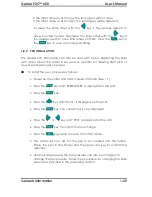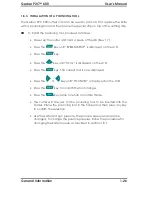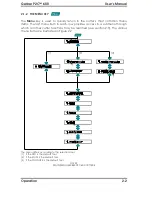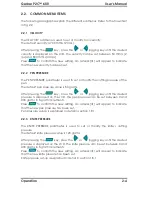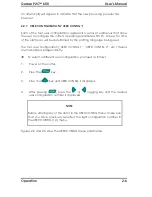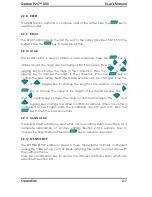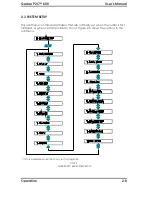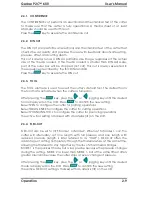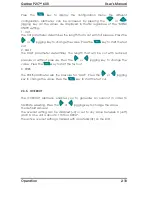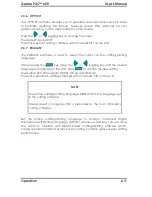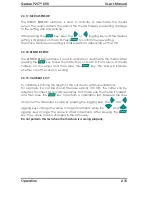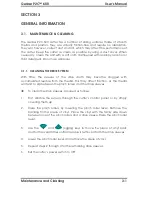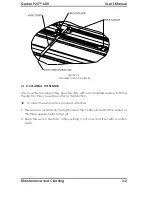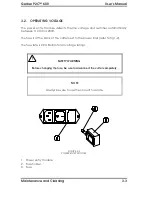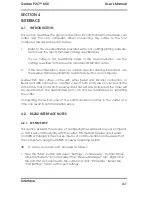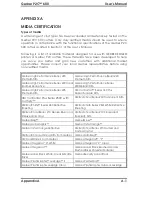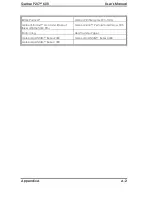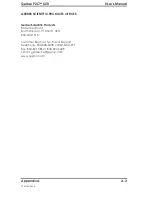
Gerber P2C™ 600
User's Manual
Operation
2-13
2.3.10. RTS/DTR
The RTS/DTR submenu controls the Request To Send (RTS) and Data Terminal
Ready (DTR) signals of the cutter's RS-232-C serial communications interface for
hardware handshaking.
The RTS/DTR default value is TOGGLE.
After pressing the
key, press the
or
jogging key until the desired
setting is displayed on the LCD. Press
to confirm the new setting.
RTS/DTR can be set to TOGGLE (hardware handshaking) or HIGH (software
handshaking).
The active handshake setting is marked with an asterisk (
!
) on the LCD.
2.3.11. RS 232 TEST
The RS 232 TEST routine verifies the cutter’s RS-232-C serial communications
(transmit data, receive data, and hardware handshaking) circuits. This test does
not require that a pen, knife or media be loaded.
!
To run the RS-232-C test, proceed as follows:
1. Unplug the RS-232-C data cable from the rear panel of the cutter.
2. Use a loopback test cable to connect pin 2 of the cutter’s data connector
to pin 3; connect pin 7 to pin 8.
3. With RS 232 TEST displayed, press the
key. The cutter will start
transmitting and receiving data at all available baud rates and parity
settings. The length of the transmissions will vary because of the different
baud rates used. The unit then checks the hardware handshake lines.
The cutter will return an error message if the RS 232 port is not working correctly.
2.3.12. ALIGN MODE
The ALIGN MODE parameter determines which alignment method is used. (See
section 3 for a complete explanation).
After pressing the
key, press the
or
jogging key until the desired
setting is displayed on the LCD. Press
to confirm the new setting.
The active align mode setting is marked with an asterisk (
!
) on the LCD.

